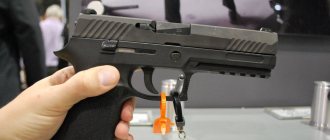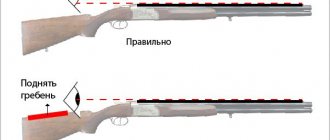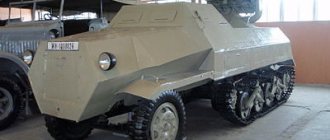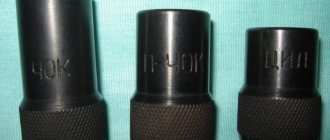All our electrical networks and circuits, as well as household appliances and electrical equipment, are reliably protected by circuit breakers. Their main task is to de-energize the electrical circuit at the right moment, i.e. turn off the electrical current. The automatic machine (AB) is triggered, i.e. turns off in cases of short circuit and network overload (heating of wires). For different electrical circuits, there are different types and types of circuit breakers.
Electric machines. Types and work. Characteristics
From the very beginning of the emergence of electricity, engineers began to think about the safety of electrical networks and devices from current overloads.
As a result, many different devices have been designed that are distinguished by reliable and high-quality protection. One of the latest developments is electric automatic machines. This device is called automatic because it is equipped with a function to turn off the power in automatic mode in the event of short circuits or overloads. Conventional fuses must be replaced with new ones after tripping, and the circuit breakers can be turned on again after eliminating the causes of the accident.
Such a protective device is necessary in any electrical network circuit. A circuit breaker will protect a building or premises from various emergency situations:
- Fires.
- Electric shocks to a person.
- Electrical wiring faults.
Types and design features
It is necessary to know information about the existing types of circuit breakers in order to correctly select the appropriate device during purchase. There is a classification of electric machines according to several parameters.
Breaking capacity
This property determines the short circuit current at which the machine will open the circuit, thereby turning off the network and devices that were connected to the network. Based on this property, machines are divided into:
- 4500 ampere circuit breakers are used to prevent faults in the power lines of older residential buildings.
- At 6000 amperes, they are used to prevent accidents during short circuits in the network of houses in new buildings.
- At 10,000 amperes, used in industry to protect electrical installations. A current of this magnitude can occur in the immediate vicinity of a substation.
The circuit breaker trips when a short circuit occurs, accompanied by the occurrence of a certain amount of current.
The machine protects electrical wiring from damage to insulation by high current.
Number of poles
This property tells us about the largest number of wires that can be connected to the machine to provide protection. In the event of an accident, the voltage at these poles is switched off.
Features of machines with one pole
Such electrical circuit breakers are the simplest in design and serve to protect individual sections of the network. Two wires can be connected to such a circuit breaker: input and output.
The purpose of such devices is to protect electrical wiring from overloads and short circuits of wires. The neutral wire is connected to the neutral bus, bypassing the machine. Grounding is connected separately.
Electrical machines with one pole are not input, since when it is disconnected, the phase is broken, and the neutral wire still remains connected to the power supply. This does not provide 100% protection.
Properties of machines with two poles
In cases where an emergency requires complete disconnection from the electrical network, circuit breakers with two poles are used. They are used as introductory ones. In emergency situations or in the event of a short circuit, all electrical wiring is switched off at the same time. This makes it possible to carry out repair and maintenance work, as well as work on connecting equipment, since complete safety is guaranteed.
Two-pole electrical circuit breakers are used when it is necessary to have a separate switch for a device operating on a 220-volt network.
A machine with two poles is connected to the device using four wires. Of these, two come from the power supply, and the other two come from it.
Three-pole electrical circuit breakers
In an electrical network with three phases, 3-pole circuit breakers are used. The grounding is left unprotected, and the phase conductors are connected to the poles.
The three-pole circuit breaker serves as an input device for any three-phase load consumers. Most often, this version of the machine is used in industrial conditions to power electric motors.
You can connect 6 conductors to the machine, three of which are phases of the electrical network, and the other three coming from the machine and provided with protection.
Using a four-pole circuit breaker
To provide protection for a three-phase network with a four-wire system of conductors (for example, an electric motor connected in a star circuit), a 4-pole circuit breaker is used. It plays the role of an input device for a four-wire network.
It is possible to connect eight conductors to the device. On the one hand - three phases and zero, on the other hand - the output of three phases with zero.
Time-current characteristic
When devices consuming electricity and the electrical network are operating normally, current flows normally. This phenomenon also applies to electric machines. But, if the current increases for various reasons above the rated value, the circuit breaker is triggered and the circuit is broken.
The parameter of this operation is called the time-current characteristic of the electrical machine. It is a dependence of the operating time of the machine and the relationship between the actual current passing through the machine and the rated current value.
The importance of this characteristic lies in the fact that it ensures the smallest number of false alarms on the one hand, and current protection is provided on the other hand.
In the energy industry, there are situations where a short-term increase in current is not associated with an emergency, and the protection should not operate. The same thing happens with electric machines.
The time-current characteristics determine after what time the protection will operate and what current parameters will arise. The greater the overload, the faster the machine will operate.
Electric machines marked “B”
Automatic switches of category “B” are capable of switching off in 5 - 20 s. In this case, the current value ranges from 3 to 5 rated current values ≅0.02 s. Such machines are used to protect household devices, as well as all electrical wiring of apartments and houses.
Properties of machines marked “C”
Electrical circuit breakers of this category can turn off in 1 - 10 s, at 5 - 10 times the current load ≅0.02 s. These are used in many areas, most popular for houses, apartments and other premises.
Legend
Different types of machines are marked in their own way for quick identification and selection of the one needed for a specific circuit or its section. As a rule, all manufacturers adhere to one mechanism, which allows them to unify products for many industries and regions. Let’s take a closer look at the signs and numbers printed on the machine:
- Brand. Usually the manufacturer's logo is placed at the top of the machine. Almost all of them are stylized in a certain way and have their own corporate color, so choosing a product from your favorite company will not be difficult.
- Indicator window. Shows the current status of contacts. If a malfunction occurs in the machine, then it can be used to determine whether there is voltage in the network.
- Machine type. As already described above, it means a shutdown characteristic at currents significantly exceeding the rated current. C is used more often in everyday life and B is used a little less frequently. The differences between the types of electric machines B and C are not so significant;
- Rated current. Shows the current value that can withstand a long-term load.
- Rated voltage. Very often this indicator has two meanings, written separated by a slash. The first is for a single-phase network, the second is for a three-phase network. As a rule, in Russia a voltage of 220 V is used.
- Switch-off current limit. It means the maximum permissible short circuit current at which the machine will turn off without failure.
- Current limiting class. Expressed in one digit or absent altogether. In the latter case, the class number is considered to be 1. This characteristic means the time for which the short circuit current is limited.
- Scheme. On the machine you can even find a diagram for connecting contacts with their designations. It is almost always located in the upper right part.
Thus, by looking at the front of the machine, you can immediately determine what type of current it is intended for and what it is capable of.
When choosing a protective device, one of the main characteristics is the rated current. To do this, you need to determine what current strength is required by the totality of all consumer devices in the house.
And since electricity flows through wires, the current required for heating depends on its cross-section.
The presence of poles also plays an important role. The most commonly used practice is:
- One pole. Circuits with lighting devices and sockets to which simple devices will be connected.
- Two poles. It is used to protect wiring connected to electric stoves, washing machines, heating appliances, and water heaters. It can also be installed as protection between the shield and the room.
- Three poles. Used primarily in three-phase circuits. This is relevant for industrial or near-industrial premises. Small workshops, production and the like.
The tactics for installing machine guns proceed from larger to smaller. That is, first it is mounted, for example, double-pole, then single-pole. Next come devices with power that decreases at each step.
Types of circuit breakers - what types of circuit breakers there are
Circuit breakers are devices whose task is to protect an electrical line from exposure to powerful current that can cause overheating of the cable with further melting of the insulating layer and fire. An increase in current strength can be caused by too much load, which occurs when the total power of the devices exceeds the value that the cable can withstand in its cross-section - in this case, the machine does not turn off immediately, but after the wire heats up to a certain level. During a short circuit, the current increases many times over within a fraction of a second, and the device immediately reacts to it, instantly stopping the supply of electricity to the circuit. In this material we will tell you what types of circuit breakers are and their characteristics.
Some tips for choosing a machine
- When choosing, you should focus not on electrical appliances, but on the wiring, since this is what the circuit breakers will protect. If it is old, it is recommended to replace it so that you can use the most optimal version of the machine.
- For premises such as a garage, or during repair work, it is worth choosing a machine with a higher rated current, since various machines or welding machines have quite high current ratings.
- It makes sense to complete the entire set of protective mechanisms from the same manufacturer. This will help avoid mismatches in current ratings between devices.
- It is better to purchase machines in specialized stores. This way you can avoid buying a low-quality fake, which can lead to disastrous consequences.
Read more: Minimalism in the interior
Automatic safety switches: classification and differences
In addition to residual current devices, which are not used individually, there are 3 types of network circuit breakers. They work with loads of different sizes and differ in their design. These include:
- Modular AV. These devices are installed in household networks in which negligible currents flow. Typically have 1 or 2 poles and a width that is a multiple of 1.75 cm.
- Molded switches. They are designed to operate in industrial networks with currents up to 1 kA. They are made in a cast case, which is why they got their name.
- Air electric machines. These devices can have 3 or 4 poles and can handle currents up to 6.3 kA. Used in electrical circuits with high power installations.
There is another type of circuit breaker for protecting the electrical network - differential. We do not consider them separately, since such devices are ordinary circuit breakers that include an RCD.
Trip mechanism design
The machines have an element that breaks the electrical circuit at critical current values. Their operating principle can be based on different technologies:
- Electromagnetic devices. They are characterized by a high speed of response to a short circuit. When currents of unacceptable magnitude are applied, the coil with the core is activated, which, in turn, turns off the circuit.
- Thermal. The main element of such a mechanism is a bimetallic plate, which begins to deform under the load of high currents. By bending, it has a physical effect on the element that breaks the chain. An electric kettle works in approximately the same way, which can turn itself off when the water in it boils.
- There are also semiconductor circuit breaking systems. But they are used extremely rarely in household networks.
The devices differ in the nature of their response to an excessively high current value. There are 3 most popular types of machines - B, C, D. Each letter indicates the sensitivity coefficient of the device. For example, a type D machine has a value from 10 to 20 xln. What does it mean? It’s very simple - to understand the range at which the machine is capable of operating, you need to multiply the number next to the letter by the value.
Type B machine has a value from 3 to 5 xln. Therefore, marking B16 means operation at currents from 48 to 80A.
But the most common type of machine is S. It is used in almost every home. Its characteristics are from 5 to 10 xln.
Types of releases
Releases are the main operating components of the automatic circuit breaker. Their task is to break the circuit when the permissible current value is exceeded, thereby stopping the supply of electricity to it. There are two main types of these devices, differing from each other in the principle of tripping:
Electromagnetic type releases ensure almost instantaneous operation of the circuit breaker and de-energization of a section of the circuit when a short circuit overcurrent occurs in it.
They are a coil (solenoid) with a core that is drawn inward under the influence of a large current and causes the tripping element to operate.
The main part of the thermal release is a bimetallic plate. When a current exceeding the rated value of the protective device passes through the circuit breaker, the plate begins to heat up and, bending to the side, touches the disconnecting element, which trips and de-energizes the circuit. The time it takes for the thermal release to operate depends on the magnitude of the overload current passing through the plate.
Some modern devices are equipped as an addition with minimum (zero) releases. They perform the function of turning off the AV when the voltage drops below the limit value corresponding to the technical data of the device. There are also remote releases, with the help of which you can not only turn off, but also turn on the AV, without even going to the distribution board.
The presence of these options significantly increases the cost of the device.
Characteristics of circuit breakers
There is another classification of machines - according to their characteristics. This indicator indicates the degree of sensitivity of the protective device to exceeding the rated current. The corresponding marking will show how quickly the device will react in the event of an increase in current. Some types of AVs work instantly, while others will take some time.
There is the following marking of devices according to their sensitivity:
- A. Switches of this type are the most sensitive and react instantly to increased load. They are practically not installed in household networks, using them to protect circuits that include high-precision equipment.
- B. These machines operate when the current increases with a slight delay. They are usually included in lines with expensive household appliances (LCD TVs, computers and others).
- C. Such devices are the most common in household networks. They are turned off not immediately after increasing the current strength, but after some time, which makes it possible to normalize it with a slight difference.
- D. The sensitivity of these devices to increasing current is the lowest of all types listed. They are most often installed in shields at the line approach to the building. They provide security for apartment automatic machines, and if for some reason they do not work, they turn off the general network.
Transition and exit tables.
Graphs are more visual for humans, while tables are clearer for machines. Any machine can be represented in the form of a table of transitions and outputs (TOP). In TPV, the rows are the internal states of the machine, and the columns are the input letters. Let's build a TPV for our graphs Mili and Moore. If any input or output letter is not defined, then a dash is put in its place. If the state is not defined, then the same simple rule applies.
Count Mili TPV
In the Mili TPV, transitions and exits are recorded in each cell. For example, if the machine is in state C0 and the letter a1 comes to the input, then it will go to state C1 and the letter b3 will appear at the output.
Earl Moore's TPV
A marked transition table is constructed for the Moore graph. An additional column is allocated for output letters. In the cell under the input letter it is written what state the machine goes to, in the rightmost cell - what output letter it returns.
Features of the selection of machines
Some people think that the most reliable circuit breaker is the one that can handle the most current, and therefore can provide the most protection to the circuit. Based on this logic, you can connect an air-type machine to any network, and all problems will be solved. However, this is not at all true.
To protect circuits with different parameters, it is necessary to install devices with the appropriate capabilities.
Errors in the selection of AB are fraught with unpleasant consequences. If you connect a high-power protective device to a regular household circuit, it will not de-energize the circuit, even when the current significantly exceeds what the cable can withstand. The insulating layer will heat up and then begin to melt, but no shutdown will occur. The fact is that the current strength destructive to the cable will not exceed the AB rating, and the device will “consider” that there was no emergency. Only when the melted insulation causes a short circuit will the machine turn off, but by then a fire may already have started.
We present a table that shows the ratings of machines for various electrical networks.
If the device is designed for less power than what the line can withstand and which the connected devices have, the circuit will not be able to operate normally. When you turn on the equipment, the AV will constantly knock out, and ultimately, under the influence of high currents, it will fail due to “stuck” contacts.
Visually about the types of circuit breakers in the video:
Normal operation current
This parameter describes the maximum permissible value for normal operation; if it is exceeded, the load shedding system will be activated. Figure 1 shows where this value is displayed (using IEK products as an example).
The normal operation current is circled
Sometimes a machine is installed on the line with a rated power significantly lower than what is necessary to ensure that the electrical cable remains operational.
It is advisable to reduce the rating of the switch if the total power of all devices in the circuit is significantly less than the cable can withstand. This happens if, for safety reasons, when after installation of the wiring some of the devices were removed from the line.
Then reducing the rated power of the machine is justified from the position of its faster response to emerging overloads.
For example, when an electric motor bearing jams, the current in the winding increases sharply, but not to short circuit values. If the machine reacts quickly, the winding will not have time to melt, which will save the engine from an expensive rewinding procedure.
Read more: How to choose the right dishwasher, tips for choosing, review of brands
They also use a value less than the calculated value due to strict restrictions on each circuit. For example, for a single-phase network, a 32 A switch is installed at the entrance to an apartment with an electric stove, which gives 32 * 1.13 * 220 = 8.0 kW of permissible power. Suppose that when wiring the apartment, 3 lines were organized with the installation of group circuit breakers with a nominal value of 25 A.
If the number of group circuit breakers installed in the distribution board is large, then they must be signed and numbered. Otherwise you might get confused
Let's assume that there is a slow increase in load on one of the lines. When the power consumption reaches a value equal to the guaranteed tripping of the group switch, only (32 – 25) * 1.45 * 220 = 2.2 kW will remain for the remaining two sections.
This is very little relative to total consumption. With such a distribution panel design, the input circuit breaker will turn off more often than devices on the lines.
Therefore, in order to maintain the principle of selectivity, it is necessary to install switches with a rating of 20 or 16 amperes in the areas. Then, with the same imbalance in power consumption, the other two links will account for a total of 3.8 or 5.1 kW, which is acceptable.
Let's consider the possibility of installing a switch with a rating of 20A using the example of a separate line dedicated to the kitchen.
The following electrical appliances are connected to it and can be turned on simultaneously:
- Refrigerator with a rated power of 400 W and a starting current of 1.2 kW;
- Two freezers, power 200 W;
- Oven, power 3.5 kW;
- When operating an electric oven, it is allowed to additionally turn on only one additional device, the most powerful of which is an electric kettle, consuming 2.0 kW.
A twenty-amp machine allows you to pass current for more than an hour with a power of 20 * 220 * 1.13 = 5.0 kW. A guaranteed shutdown in less than one hour will occur with a current flow of 20 * 220 * 1.45 = 6.4 kW.
In the kitchen, refrigeration equipment and the stove must have a permanent connection to electricity. If there is a risk of excess current, then the simultaneous operation of other devices can be eliminated by allocating only two sockets for them
When the oven and electric kettle are turned on simultaneously, the total power will be 5.5 kW or 1.25 parts of the machine’s nominal value. Since the kettle does not work for long, it will not turn off. If at this moment the refrigerator and both freezers turn on, the power will be 6.3 kW or 1.43 parts of the nominal value.
This value is already close to the guaranteed tripping parameter. However, the likelihood of such a situation occurring is extremely low and the duration of the period will be insignificant, since the operating time of the motors and the kettle is short.
The starting current that occurs when starting the refrigerator, even in the sum of all operating devices, will not be enough to trigger the electromagnetic release. Thus, under the given conditions, a 20 A circuit breaker can be used.
The only caveat is the possibility of increasing the voltage to 230 V, which is permitted by regulatory documents. In particular, GOST 29322-2014 (IEC 60038:2009) defines the standard voltage as 230 V with the possibility of using 220 V.
Now most networks supply electricity with a voltage of 220 V. If the current parameter is adjusted to the international standard of 230 V, then the ratings can be recalculated in accordance with this value.
Types of circuit breakers
If an emergency occurs in the electrical network - a short circuit, fire or electric shock to a person, it must be immediately de-energized. Previously, this function was performed by fuses. Their main disadvantage is that they disconnect only one, and most often only the phase, line.
And according to today’s operating rules for electrical installations, a complete break is required. In addition, they do not act quickly enough and must be replaced after operation. Automatic fuses and switches do not have these disadvantages.
Types and types of circuit breakers
The family of electrical devices, which in everyday use are often called “electrical machines,” is very diverse. If such a comparison is allowed, it consists of several clans, differing in the type of influence to which they react, as well as in their design.
Depending on this, they are used to protect the entire electrical network as a whole, individual circuits and devices, or a person. There is also an intra-clan division. For example, in terms of response speed.
Types of circuit breakers by type of impact:
- Triggered by overcurrent (short circuit) and heating. The most common type. They are used to protect the entire power supply circuit (input circuit breakers) or individual devices.
- Response to differential current. These are the so-called RCDs - residual current devices used to prevent electric shock to a person.
- Thermal relays. Used in electric drives to protect electric motors from overloads.
Circuit breaker design
The design principle of switches that respond to overcurrents and overheating is the same as for devices such as AP, VA or automatic fuses. BA type switches have screw terminals. A moving contact is connected to the input, which is connected to the control lever by a system of levers and springs.
When turned on, it has electrical contact with an electromagnetic release - a solenoid with a movable core-rod. The conductor at its output is connected to another control element - a bimetallic plate abutting the rod. An additional element of the device is an arc-extinguishing chamber - a package of plates made of electrical fiberboard.
The release is designed to operate when a certain current rating passes through its coil. When this value is reached, the solenoid pushes the rod and opens the contact. Note that the bimetallic strip is connected to the output terminal. Therefore, there is a significant difference in how to install a circuit breaker. When turned upside down, it stops responding to a short circuit due to the additional resistance of the plate.
Residual current circuit breakers
They are called RCDs - residual current devices. Outwardly, they are very similar to VA machines, differing only in the “Test” button. Fundamental differences in the design of the electromagnetic release. It is built on the basis of a differential transformer.
Its primary winding is made up of two coils, to which the phase and neutral wires are connected. The secondary winding is connected by a solenoid. In the normal state, the currents in the phase and neutral conductors are equal in magnitude, but opposite in phase. They compensate each other, and no electromagnetic field is induced in the primary winding.
When there is a partial breakdown of the insulation and the phase line is connected to the ground loop, the balance is disrupted and a magnetic flux appears in the primary winding, generating an electric current in the secondary. The solenoid operates and opens the contact.
This happens if, for example, a person takes with his hand an electrical appliance whose body is shorted to phase. These devices do not protect against short circuits or overheating, so they are installed in series with VA circuit breakers. And definitely after them. Read about the correct connection here.
Residual current devices: differences from VA
The operating principle of the RCD has completely different functions. There are 4 contacts on the case, 2 of which are for phase wire input/output, and 2 for neutral wire. Such devices operate on the principle of potential difference. During normal operation of the circuit, the phase and zero are balanced and the RCD operates normally. However, the slightest current leakage creates an imbalance and the device automatically turns off. For human protection, this type of machine gun is better than VA.
View gallery
Let’s take, for example, a breakdown of a phase wire on the body of any household appliance. Almost everyone knows how unpleasant sensations arise when touching metal in such a case. In this situation, as soon as a person touches the device, the RCD will turn off the power, and the device’s response is much faster than that of a VA. However, this type of machine does not protect against a short circuit - it simply does not react to a short circuit and continues to work.
For those who want to understand the operation of the RCD in more detail, below is a short video.
Differential switches
They are also called residual current circuit breakers - the abbreviation RCBO. They combine a VA machine and an RCD. Their use simplifies the electrical circuit and its installation - instead of two devices, you can install one.
You can distinguish a RCBO from an RCD by a schematic image on the front panel, which is not always possible due to insufficient technical literacy, or by the letter in front of the nominal value and its value. Read more about this here.
On the residual current device it can be written, for example, In 16A and I∆n 10 mA. The first value is the rated current of the circuit in which the device can operate. Note that there is no letter in front of it. The second is the operating current, it never exceeds a few amperes. The RCBO is marked differently: C16 10 mA. Letter C is a time-current characteristic.
Time-current characteristics of circuit breakers
Depending on the design of the magnetic trip solenoid, the circuit breaker may trip at different rates. This is called the time-current characteristic. The main ones are:
- A – the fastest possible response. Necessary for protecting semiconductor circuits sensitive to the quality of electricity. The device can only operate in conjunction with a compensation-type stabilizer. It is better not to use it at home, since the quality standards for household networks are low, it will constantly work.
- B – sensitivity is increased, but the response time is reduced. Can be used to protect power supply circuits of local area networks.
- C is the most common type of device used in everyday life. Satisfactory sensitivity and average response speed.
- B – industrial version with reduced sensitivity. Used in networks with large amplitudes of voltage drops. For example, connected to traction substations of electric vehicles.
Circuit breakers are an important element of an electrical circuit. Operation of electrical installations without them can lead to a local man-made disaster and pose a threat to the lives of operating personnel.
{SOURCE}










